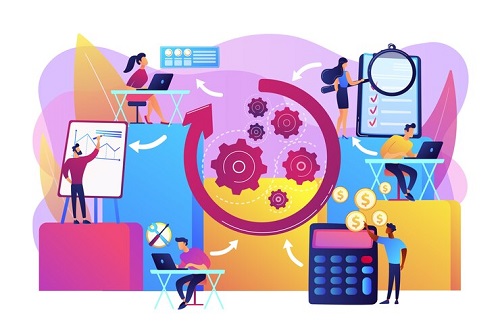In the ever-evolving landscape of technology, the demand for real-time data processing and responsiveness is at an all-time high. The shift towards event-driven architectures, especially in cloud environments, marks a significant transformation in how applications are designed and deployed. This blog explores the nuances of event-driven architecture, its benefits, and the future it holds in cloud computing.
Understanding Event-Driven Architecture
Event-driven architecture (EDA) is a design paradigm that revolves around the generation, detection, and response to events. At its core, EDA is built on three fundamental components: events, producers, and consumers.
- Events are significant changes in state or conditions that are detected by the system. They can be anything from a user clicking a button to a sensor reading a temperature change.
- Producers are entities or components that create events. These could be user interfaces, IoT devices, or any system component that generates data.
- Consumers are entities that react to events. They process the event data and perform necessary actions, such as updating a database or triggering another event.
Unlike traditional request-driven systems, where a client sends a request and waits for a response, event-driven systems are asynchronous. This means that events are processed independently, allowing for greater flexibility and efficiency in handling multiple tasks simultaneously.
The Power of Real-Time Data Processing
Real-time data processing is crucial in today’s fast-paced digital world. It enables applications to respond instantly to changes, providing users with up-to-the-minute information and services. Industries such as finance, healthcare, and e-commerce greatly benefit from real-time capabilities.
- Finance: Stock trading platforms rely on real-time data to make quick decisions and execute trades.
- Healthcare: Real-time monitoring of patient vitals can alert medical staff to emergencies immediately.
- E-commerce: Personalized recommendations and dynamic pricing models are powered by real-time data analysis.
Traditional architectures often struggle with real-time processing due to their synchronous nature, leading to latency and bottlenecks. Event-driven models, however, excel in managing real-time data by allowing systems to process events as they occur, without waiting for a request-response cycle.
Enhancing Event Handling in the Cloud
Cloud computing has revolutionized event-driven architectures by providing the necessary infrastructure and services to support this model. Cloud platforms offer scalability and flexibility, enabling applications to handle varying loads efficiently.
- Scalability: Cloud services can automatically scale resources up or down based on demand, ensuring optimal performance.
- Flexibility: Developers can deploy event-driven applications across multiple regions, enhancing availability and resilience.
Examples of cloud services that facilitate event-driven applications include:
- AWS Lambda: Allows developers to run code in response to events without provisioning servers.
- Azure Functions: Offers a serverless compute service that enables event-driven execution of code.
- Google Cloud Functions: Provides an environment for building and connecting cloud services using event-driven logic.
Benefits of Event-Driven Applications
Event-driven applications offer numerous advantages, particularly in cloud environments:
- Improved Responsiveness: Applications can react to events in real-time, enhancing user experience.
- Scalability: Event-driven models can handle large volumes of events efficiently, adapting to changes in demand.
- Resource Efficiency: By processing events only when they occur, applications use resources more effectively, reducing costs.
These benefits culminate in better user experiences, as applications become more interactive and responsive to user needs.
Real-World Applications and Case Studies
Several companies have successfully implemented event-driven architectures to enhance performance and efficiency. For instance:
- Netflix: Utilizes an event-driven model to manage its vast content library and deliver personalized recommendations to users.
- Uber: Employs event-driven architecture to match drivers with riders in real-time, optimizing routes and reducing wait times.
Case studies highlight the improved performance and efficiency achieved through event-driven systems. These implementations offer valuable lessons and best practices, such as the importance of monitoring and managing event flows to prevent bottlenecks.
Future Trends in Event-Driven Cloud Computing
As technology continues to advance, the future of event-driven applications in cloud environments looks promising. Emerging technologies such as edge computing and artificial intelligence are poised to enhance event-driven models further.
- Edge Computing: By processing events closer to the source, edge computing reduces latency and improves real-time capabilities.
- Artificial Intelligence: AI can enhance event-driven systems by predicting events and automating responses.
Businesses looking to leverage these trends should focus on building flexible, scalable architectures that can adapt to new technologies. By staying ahead of the curve, companies can capitalize on the efficiencies and innovations that event-driven cloud computing offers.
The real-time revolution is here, and event-driven architectures are at the forefront of this transformation. As cloud computing continues to evolve, the potential for event-driven applications to reshape industries and enhance user experiences is limitless.



